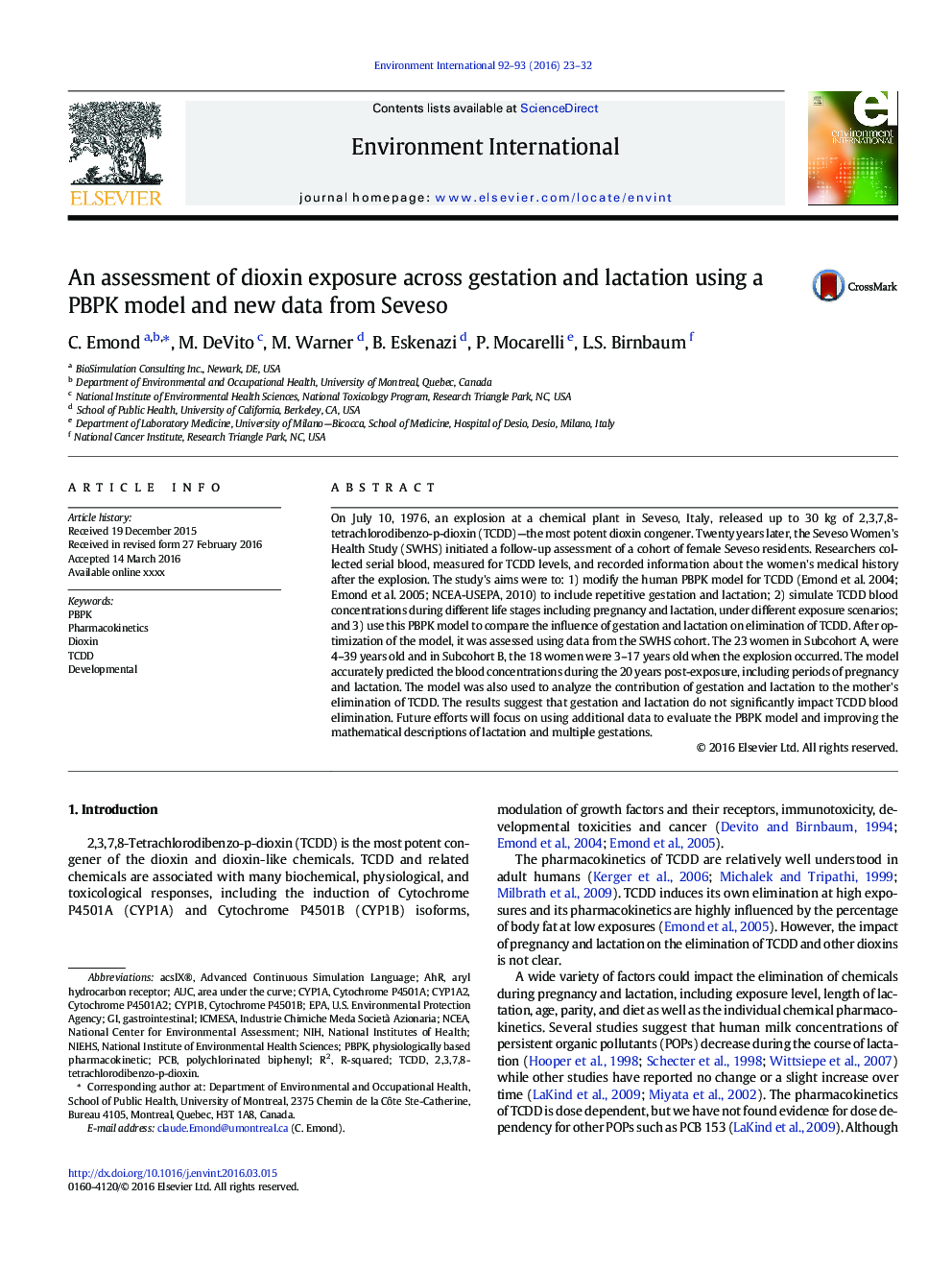| Article ID | Journal | Published Year | Pages | File Type |
|---|---|---|---|---|
| 6312947 | Environment International | 2016 | 10 Pages |
Abstract
On July 10, 1976, an explosion at a chemical plant in Seveso, Italy, released up to 30Â kg of 2,3,7,8-tetrachlorodibenzo-p-dioxin (TCDD)-the most potent dioxin congener. Twenty years later, the Seveso Women's Health Study (SWHS) initiated a follow-up assessment of a cohort of female Seveso residents. Researchers collected serial blood, measured for TCDD levels, and recorded information about the women's medical history after the explosion. The study's aims were to: 1) modify the human PBPK model for TCDD (Emond et al. 2004; Emond et al. 2005; NCEA-USEPA, 2010) to include repetitive gestation and lactation; 2) simulate TCDD blood concentrations during different life stages including pregnancy and lactation, under different exposure scenarios; and 3) use this PBPK model to compare the influence of gestation and lactation on elimination of TCDD. After optimization of the model, it was assessed using data from the SWHS cohort. The 23 women in Subcohort A, were 4-39Â years old and in Subcohort B, the 18 women were 3-17Â years old when the explosion occurred. The model accurately predicted the blood concentrations during the 20Â years post-exposure, including periods of pregnancy and lactation. The model was also used to analyze the contribution of gestation and lactation to the mother's elimination of TCDD. The results suggest that gestation and lactation do not significantly impact TCDD blood elimination. Future efforts will focus on using additional data to evaluate the PBPK model and improving the mathematical descriptions of lactation and multiple gestations.
Keywords
Related Topics
Life Sciences
Environmental Science
Environmental Chemistry
Authors
C. Emond, M. DeVito, M. Warner, B. Eskenazi, P. Mocarelli, L.S. Birnbaum,
